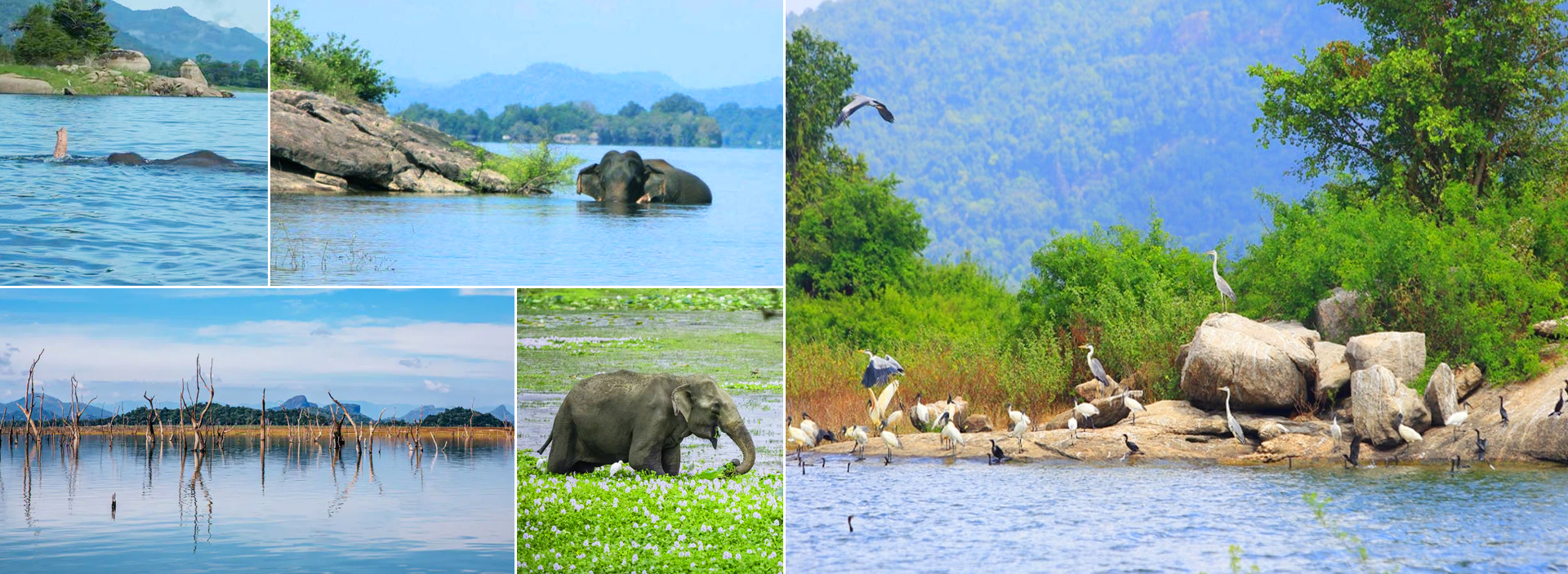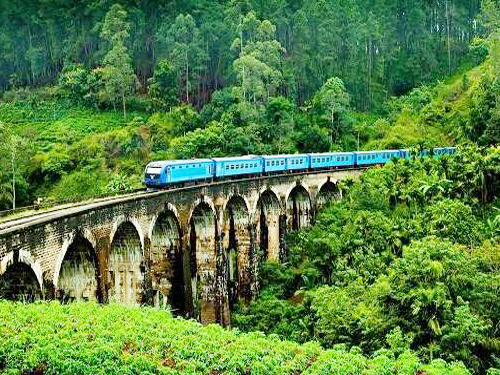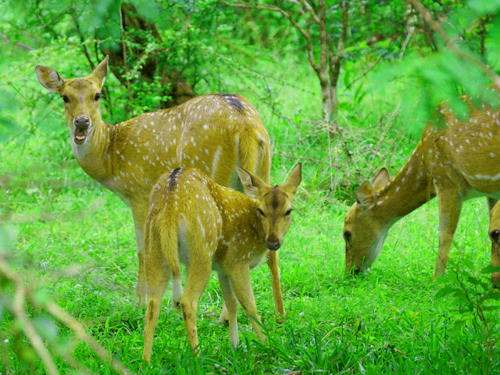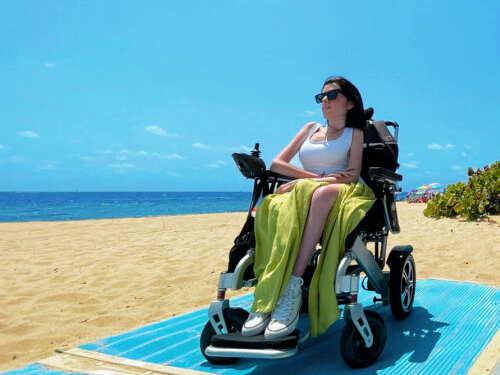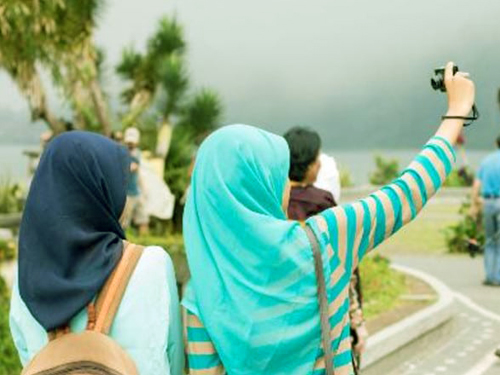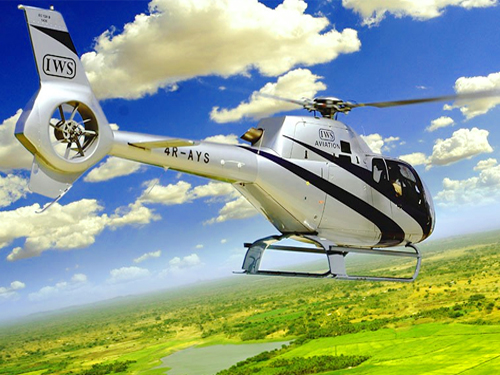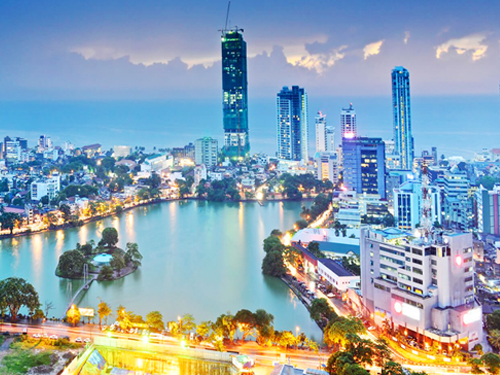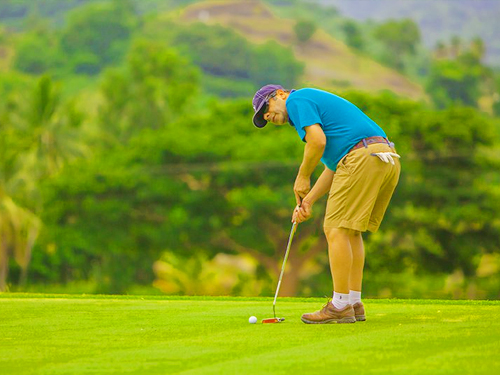Gal Oya in Sri Lanka
Gal Oya Development Board created protected areas to protect SenanayakeSmudraya's catchment area and other reservoirs. This also prevented soil erosion from the Thalawa grassland being burned by the villagers. Gal Oya National Park and SenanayakeSamudraya Sanctuary were the protected areas created in 1954. Gal Oya Valley north-east Sanctuary, Gal Oya Valley south-east Sanctuary, Gal OyaOya valley south–east Sanctuary and Gal Oya peak south-east Sanctuary are also among them. These four reserves together account for 63,000 ha. The department's duties include administration and protection of the protected areas, as well as reducing human-elephant conflicts and enforcement of the flora & fauna ordinance. There are four locations where Rangers can be found: Inginiyagala (Mullegama), Nilgala, Baduluwela, and Nilgala. Additionally in 1974 the Buddhangala Sanctuary was also designated.Buddhangala is a monastery with ruins of a stupa and other buildings in the nearby Malwattai area.
The park's elevation ranges from 30 m up to about 900m. It receives rain during the North-eastern Monsoon, which averages 1,700mil (66.93 in) annually. An alternative way to access the National Park is by crossing the SenanayakeSamudraya via Inginiyagala. Bird's Island is an island that birds use for nesting. Water flows through a natural tunnel from Gal Oya to the reservoir. It is called Makara Kata (Sinhalese meaning "dragon's mouth") or simply Makara. Dighavapi stupa, which is also located in the area, receives thousands of pilgrims every year. Built in the 2nd Century BC, the stupa is located on the spot where Buddha is believed to have meditated during his third trip to Sri Lanka. Danigala is a historical site because it was home to the HenebaddeVeddas.
Gal Oya National Park Sri Lanka is located in the Uva Province, which is in the south-east part of Sri Lanka. It was established by the Gal Oya Development Board in 1954 to protect the catchment of the huge 'SenanayakeSamudra Reservoir, which is the largest reservoir of Sri Lanka. In 1965, it was transferred to the Department of Wildlife Conservation.
Gal Oya National Park is rich both in fauna and flora. About 45 percent of the Park's area is covered with evergreen forest, while another 33 percent is occupied by savannah. The Park covers more than 25,000 hectares and includes three mountains, Nilgala, Danigala and Ulpotha. The highest peak is 900m.
One of the four protected areas that make up the Gal Oya National Park is the Buddhangala Sanctuary. It contains ruins of a Stupa as well as other buildings from the 2nd century BC. This is where Lord Buddha was believed to have visited when he left Sri Lanka. The Veddas, one of Sri Lanka's last strongholds, occupied the hilly country West of the Park.
The Park's elevation ranges from 30m up to around 900m. Rainfall is received during the North East monsoon, which averages 1,700 millimetres annually.
The forest's vegetation is composed of three types of vegetation: shrub, forest and grassland. The dominant species of rough grass in Thalawa grassland are CymbopogonNardus ("mana"), and ImperataCylindrica ("iluka"). The Damana grasslands, also known as the Damana grasslands, are used by villager cattle to graze on. The forest also contains rare medicinal plants such as Careyaarborea, Pterocarpusmarsupium and Cassia fistula. Berryacordifolia, longan, Mangiferazeylanica, Diospyros spp., Ziziphus spp. The most common flower species are Mallotus ("walKeppetiya")
There are 32 terrestrial mammals that have been found in the park. The mugger Crocodile, star tortoise are two examples of reptiles found in the park. Gal Oya has more than 150 bird species. Gal Oya National Park has more than 150 species of birds.
- Crocodile : South Asia is home to the endemic Mugger Crocodile. They are found in national parks and freshwater lakes, and can grow to up to 16 ft or 5 m long.Visitors can take a boat safari to see Muggers up-close, basking on granite rocks in the sun and sometimes even hunting birds or reptiles.
- Elephant : SenanaykeSamudra is Sri Lanka's largest body of inland waters and the best place to view swimming elephants.The Sri Lankan Elephant, a subspecies of the Asian Elephant, has been listed by IUCN since 1986 as endangered.Gal Oya has a high density of elephants and can still be viewed by boat or jeep on safaris throughout the Park.
- Leopard : The shyness of Sri Lankan leopards is well-known. The Park is home to nocturnal animals that are often hidden in thick forests, making it difficult for people to see them.The population is healthy and there are many leopard conservation programs like the one run by The Wilderness and Wildlife Conservation Trust.
- Birds : SenanayakeSamudra Reservoir has many small islands that are home to an amazing variety of bird species. These include Sri Lanka's largest bird, The Lesser Adjutant, and the Red Faced Malkoha. The Park is home to 150 of Sri Lanka's 430 bird species. It is a paradise for bird lovers. Bird Island, also known as "KuruluDupatha", is home to a large number of birds that nest in the forest and on the high rocky outcrops.
Explore an ancient land that has not been touched by time. This is a place of peace and tranquility where you can reconnect with the earth's rhythms. Get lost in the natural world. Indulge yourself in the culture of your local area. Gal Oya is a remote wilderness area in Sri Lanka that has the richest wildlife.
Gal Oya Lodge, a unique Sri Lankan ecolodge that spans 20 acres of private forest is located at Gal Oya Lodge. Enjoy this natural paradise by taking your time and walking with the Vedda neighbors, one of the few remaining communities of forest-dwelling indigenous people in Sri Lanka.
Gal Oya Lodge is well-known for its unique Safari activities. Gal Oya Lodge's naturalists can lead guests on a variety of adventures. Gal Oya National Park is the only island that offers a boat safari. The best way to see Sri Lankan wildlife in its natural habitat is to float on the largest reservoir in Sri Lanka. Gal Oya National Park is well-known for its elephant herds and rich birdlife. It also hosts 32 species of mammals, including langurs and sloth bears. You can also go on a walking safari with one of our naturalists to explore the forest along the many trails. Our naturalists can arrange picnics for our guests to enjoy alfresco dining in the park. Go on a walk with the Veddas. Meet the Vedda tribe, an ancient tribe that lives off the land. You will be guided through the Vedda Chief's ancient lands by him and he will share his wisdom with you. You can tailor any excursion to your preference.
This is the only way to see wildlife in Sri Lanka from the water. This is a great way to get into the habitats of wildlife. You might spot elephants on the shores of the lake, or swimming between the islands. It takes about 2 hours to go on a boat safari, with a scenic 40-minute drive to reach the lake from the lodge. This is a great way to see the surrounding villages and national parks.
Enjoy the beautiful lodge and birdlife with a resident naturalist. There are many routes to choose from, including one that takes you through the trees to the lake. You can see a variety of birds, such as Kingfishers and Eagles. For a customized trip that suits your needs, please discuss your interests with your naturalist.
Gal Oya National Park in Sri Lanka is one of the country's most treasured natural areas. We offer a jeep tour to the Nilgala area of the park. This section was once the protectorate for ancient royalty. It is home to a variety of medicinal plants as well as endemic birdlife. The park is home to most of the animals that live on the island. Although they are shy and difficult to spot at times, it hosts many of them. For those who are more adventurous, they may choose to hike to the makara river mouth along with one of our naturalists to get a better view of the jungle and to see wildlife from foot.
You can enjoy lunch by the waterfall, river or with stunning views of the park. Our safari chef can prepare a delicious picnic lunch. A picnic can be paired with a jeep safari. If you want to continue with a walking and jeep safari, we recommend that you start at 12:30pm for a late lunch.
A 1.5-hour uphill trek is recommended for those who are adventurous and want to get up early in the morning. The panoramic views from the top of the valley are breathtaking. You can watch the sun rise above the hills and see the jungle canopy below. It's a great way to get up early. Enjoy your rest of the day with a good breakfast after you have finished.
Gal Oya Lodge is located near one of the last communities of the Veddha, a forest-dwelling indigenous people from Sri Lanka. You can request the chief of the village to lead you through the jungles of his ancestors. He will bring the forest to life and explain his tribe's use medicinal plants, cave dwellings, and ancient hunting grounds. This is a fascinating look into the lives of hunter-gatherers in Gal Oya's jungles.
Enjoy a leisurely bike ride with one of our naturalists during your stay at lodge. You can choose to take a shorter trail to reach the tiny KiriOruwalake, which is home to many bird species. You can also ride the longer main road that runs through the park to the NamalOya Reservoir. Helmets can be rented.
Take a night stroll with one of our naturalists and you might be able to spot some of our nocturnal friends as they emerge from their usual resting places. You can use a torch to identify eyes that are looking back at you. They could be reptiles, amphibians, mammals, or birds. The Frog Mouth bird, or the rare thick-tailed Pangolin is one of the highlights.
For a taste of traditional Sri Lankan cooking, join our chef Premarathna at our jungle kitchen hut located just a few steps from the Lodge. You can forage in the forest to find the essential ingredients for your meal while you are on the way.Where the rest of your ingredients are waiting for you Premarathna will show you how to make traditional local dishes.Thalapa, Thumba and river fish curry are just a few of the many meals you can enjoy, along with forest salads, Kankun, and spiced yams.
Gal Oya National Park is located in Badulla to the south-east and west of Sri Lanka. From Colombo (300km), the route takes you via Ratnapura. Pelmadulla. Udawalawe. Thanamalwila. Wellawaya. Moneragala. Then, travel north from Siyambalanduwa towards Inginiyagala. You can fly by helicopter from either the Bandaranaike Airport, Ratmalana or Gal Oya. From there you can reach the Park via road. This area of Sri Lanka is not accessible by Air Taxi Services.
Gal Oya National Park is open all year. However, it is best to visit between March and July as the elephants congregate around the waterholes to drink or socialize.
The Gal Oya, a river that runs 108km (67 miles) in south east Sri Lanka. It is Sri Lanka's 16th longest river. It flows northeast from the hills east side of Badulla, and then it exits into the Indian Ocean at Kalmunai. Gal Oya's 1948 scheme dammed the river.
Leadership of Senanayake
Gal Oya's multipurpose Gal Oya scheme to colonize uninhabited regions resettled 250,000 residents. He encouraged hydroelectric-power development in a country that didn't have any coal, oil or gas reserves.

 Safe Travels
Safe Travels Français
Français Deutsch
Deutsch עִברִית
עִברִית Italiano
Italiano Nederlands
Nederlands Polski
Polski Pусский
Pусский Español
Español